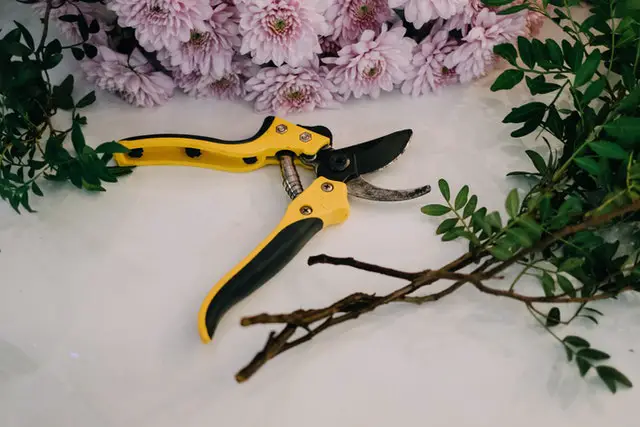If you’re not used to taking care of plants, the process of pruning your houseplants, which involves chopping off stems and leaves, can be nerve-wracking. Is it going to hurt the plant? Will the plant perish as a result? Cutting stems and leaves from your plants may appear to be highly destructive, but this tutorial will help you understand why pruning is really beneficial to your plants.
In this plant care article, we’ll look at a few aspects related to pruning your houseplants:
- Plants won’t be harmed by pruning.
- Why should you prune your plants?
- Pruning with caution
This guide will accomplish two goals for you: the first is to educate you about how to prune your plants if you are just starting out as a plant owner, and the second is to help you feel more comfortable with pruning your plants. Let’s jump right in and get to the bottom of what it means to prune your houseplants by gaining a better understanding of how to remove stems and leaves from your plant.
Table of Contents
Plants won’t be harmed by pruning.
It is not detrimental to the health of your houseplants or plants in general to prune them. When you’re first getting started, the idea of simply cutting off a portion of your plant might be somewhat unsettling. The good news is that, because plants are not the same as humans and animals, cutting them won’t hurt them in any way. If you take cuttings from your plant after you’ve pruned it, you can use those to start a new plant.
Plants are incredibly excellent at healing themselves, and they will constantly try to establish new roots if given the opportunity. If you have ever used a propagation guide in the past, then you have already trimmed your plant at some point in the past. You won’t have missed the fact that both the parent plant and the cutting are in thriving health at this point.
So, why would you prune your plants, or should you prune them? In the following paragraph, we will find out.
Reasons for pruning your plants
You should trim your plants for a few different reasons, depending on the situation. It may be important to prune your plant in order to assist it in recovering after an attack by a pest. There are also occasions when you prune your plants for an entirely different reason: you want to encourage new growth. Let’s take a look at a few of the justifications behind pruning your plants.
When you see root rot, it’s time to prune your plant.
When you discover that your plant has root rot and you want to give it the best possible opportunity to heal, you may find that it is essential to prune your plant. As soon as you become aware that your plant is suffering from root rot, you will need to prune away the diseased roots. If you prune these roots, you are preventing the root rot from spreading to other healthy roots.
When your plant is suffering from root rot, it is important to cut off a few of the plant’s branches and leaves in order to help it recover. It is in everyone’s best interest to cut back these stems and leaves, as they are all competing for the same limited supply of energy and nutrients.
If more than half of the plant’s roots are infected with root rot, the plant won’t be able to get sufficient nutrients and moisture from the soil to sustain itself. When you cut back your plant in this way, you are ensuring that the portion of the plant that is still there will receive sufficient nutrients to enable it to recuperate.
To encourage growth, prune your plant.
One of the benefits of pruning a houseplant is that it reduces the amount of energy and nutrients it needs to maintain itself, as we discussed in the previous paragraph. This is wonderful when you want to assist your plant in recovering from an infestation caused by a bug, and it is also wonderful for encouraging growth.
Your plant will still have access to all of its nutrients even after you take away a stem, but it will require less food to support its current size. When a plant has access to an abundance of nutrients, it is able to shift its attention from just surviving to actively expanding. The stems and leaves on your plant that are either passing away or “simply don’t look good” are the ones that should be pruned.
It won’t hurt your plant if you trim it, so feel free to remove any leaves that are contributing to its unsightly appearance. After removing the less desirable leaves from your plant, it will look better almost immediately, and you will also be encouraging the growth of new stems and leaves.
Prevent plant pests
Pests are drawn to death and decay. They will settle there and raise their young there since there is an abundance of food for them there, which is why they are drawn to there. When you have this information, you will have an advantage against the pests that want to make their homes in or around your plants.
You have the option of doing leaf pruning whenever you become aware that individual leaves are falling off, transforming into a different color, or just do not look their best. You may prevent pests from settling in or near your plants by doing preventative maintenance such as trimming dead stems or leaves before they decompose. You have not only provided your plant with more nutrients by removing these stems and leaves, but you have also given it the opportunity to produce new leaves and/or repair itself.
Pruning your plants should be done with care.
We have found that it is generally beneficial for your plant to perform some form of pruning, which involves removing branches and leaves from the plant. In the event that you are still on the fence regarding trimming your plants, the following is a rundown of all of the advantages that have been discussed in this guide:
- Pests are kept at bay by pruning dead stems and leaves.
- Pruning returns energy to the plant, allowing it to recoup or focus on growth.
- Pruning decaying roots promotes the health of healthy roots.
- Pruning immediately improves the appearance and health of your plant.
- Above all, pruning does not hurt your plant.
Pruning your plants nearly never has any negative consequences and almost always results in positive outcomes. However, before you go and trim all of your plants, let’s first talk about one of the potential drawbacks.
After the plant has been pruned, give it some time to recuperate.
If you give your plant enough time to recuperate after you prune it, you won’t cause any harm to it. The “time to recover” varies quite a little from one plant to the next, and some plants do not require as much “recovery time” as others do. The vast majority of plants do not need much time to recuperate from being pruned and will be OK after only a few hours.
However, before you can prune certain plants again, they will require a few days to recuperate from the last pruning. First, let’s talk about the most significant category of plants that need a longer period of time to recover: vine plants.
Vine plants, such as Pothos, Philodendrons, and Maranta Prayer plants, require a few days to recuperate after being pruned. These kinds of plants have very long vines that are capable of storing a significant amount of water.
Cutting these vines will result in a “leak” in their vines, which will allow moisture to seep out. It is critical to prune these plants carefully so that the roots do not entirely dry out.
When you are pruning these kinds of plants, a good rule of thumb to follow is as follows: prune no more than two vines at a time. Your plant is able to recover relatively rapidly from the loss of two vines, and it will have no negative effects as a result.
Pruning additional vines risks drying out the vines, which might damage the plant. When you no longer see moisture leaking from the cut vines on your plant, it is time to trim them again.
When trimming leaves for these plants, you won’t have to limit yourself to a maximum of two leaves at a time. Because you are preventing a significant amount of moisture loss when you clip the leaves, you may safely prune more.
Conclusion
When you prune your plant for the very first time, it might be nervous since it seems counterintuitive to chop off portions of your plant. When you prune, though, your plant won’t suffer any harm, so don’t be concerned about that. We’ve shown in this plant care article that trimming your plant isn’t harmful and may really help it grow and live. The act of pruning can provide your plant with more energy, which it can then use to produce new leaves, defend itself against pests, or recuperate from root rot.
If you wish to prune your plant but are unsure which leaves or stems should be removed, you should begin by removing the leaves that have the worst appearance first. In this manner, your plant will immediately appear healthier and have more energy to produce new leaves.
I appreciate you taking the time to read my article. I really hope that this information is of use to you in maintaining the health and beauty of your plants.
Frequently Asked Questions
Is pruning harmful to a houseplant?
Pruning your houseplant will not hurt it in any way. It may even aid in its growth and recovery from any difficulties.
Does pruning a plant help it to grow?
It’s true that you’re returning some of the plant’s vitality to it when you prune it. This additional energy can be put to use in the process of growing new stems and leaves.
Photo by Maria Tyutina: https://www.pexels.com/photo/pruning-shears-beside-carnation-flowers-6662500/


